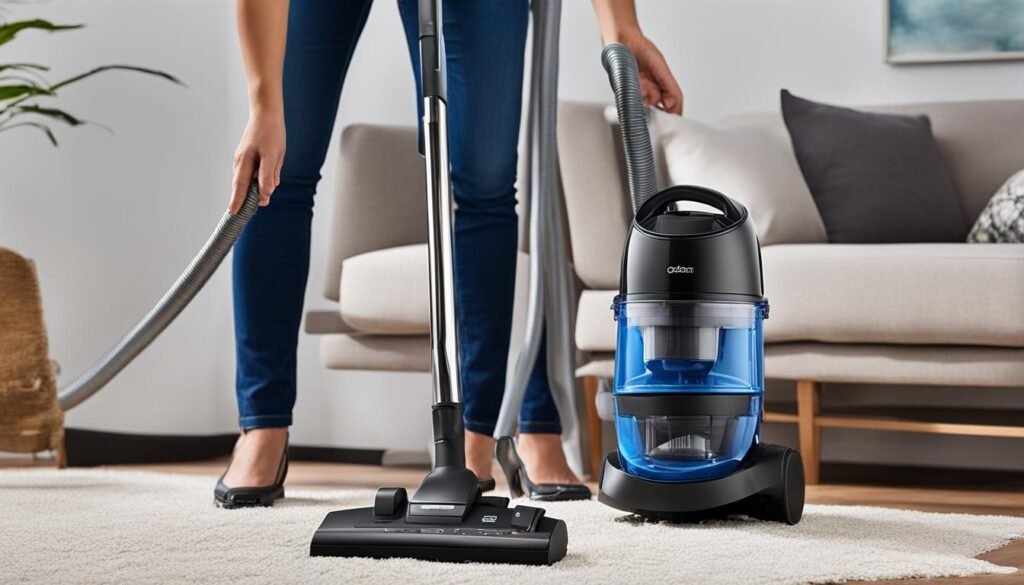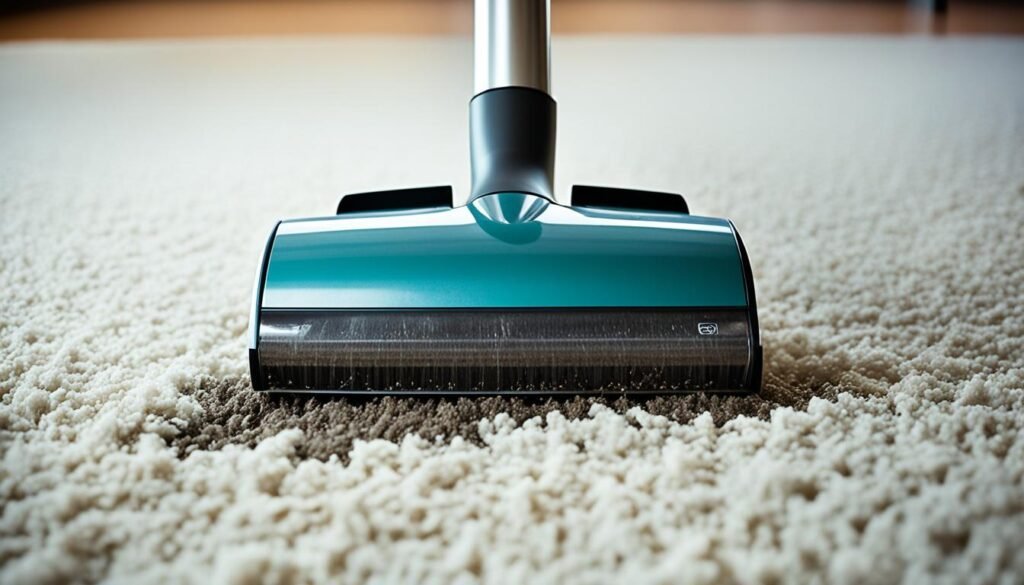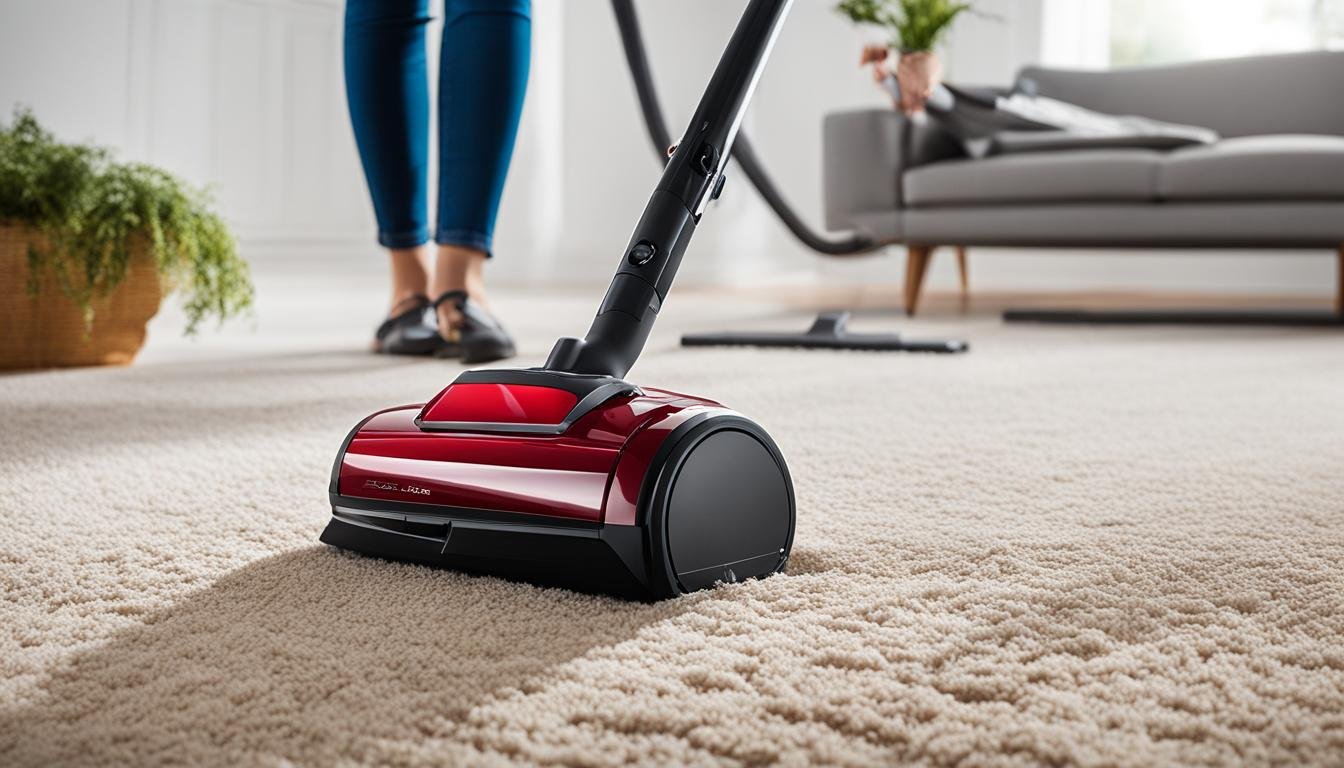When it comes to keeping our homes clean and dust-free, a reliable vacuum cleaner is essential. With so many options available on the market, finding the best vacuum cleaner can be a daunting task. That’s why I’m here to guide you through the top features you should consider when choosing a vacuum cleaner.
The first feature to look for is motor power. A vacuum cleaner with a higher motor input power is generally more efficient at picking up dirt and debris. Look for models that specify motor power in watts for easy comparison.
Next, consider the water lift capability of the vacuum cleaner. This measurement tells you how well the vacuum can pick up heavier soils, making it ideal for deep cleaning. A water lift of 90 inches or more is recommended for canister vacuum cleaners.
Another important specification to consider is airflow. A vacuum cleaner with high airflow is more effective at moving dirt from surfaces to the dust bag or container. For canister vacuum cleaners, an airflow of 100 CFM (Cubic Feet per Minute) or more is recommended. For upright vacuum cleaners, look for models with 60 CFM or better airflow.
When choosing between different designs, keep in mind that “Direct Air” models pass dirt through the motor, while “By-pass” models filter the air before it reaches the motor. Understanding the design can help you select the right vacuum cleaner for your needs.
Now that we’ve explored the top features of vacuum cleaners, it’s time to dive deeper into the specific options available – bagless and bagged. Let’s explore the pros and cons of each in the next section!
Key Takeaways:
- A vacuum cleaner’s motor input power, water lift, and airflow are crucial features to consider when comparing models.
- Canister vacuum cleaners should have a water lift of 90 inches or more and an airflow of 100 CFM or higher.
- Upright vacuum cleaners come in “Direct Air” and “By-pass” designs, each with its own advantages.
Choosing Between Bagless and Bagged Options
When it comes to selecting a vacuum cleaner, one of the key decisions you’ll need to make is whether to opt for a bagless or a bagged model. Both options have their advantages and considerations, so it’s important to understand their features and maintenance requirements before making a choice.
Bagless vacuum cleaners offer the convenience of not having to buy and replace bags. Instead, they use onboard filters to trap dirt and dust while allowing the air to pass through. These filters require periodic replacement to ensure optimal performance and maintain suction power. One significant advantage of bagless models is the visibility of the collected dirt and dust, making it easier to know when it’s time to empty the container.

“Bagless vacuums allow you to see what you’ve collected, which can be satisfying and provide a sense of accomplishment.”
However, emptying a bagless vacuum can sometimes be tricky. While some models feature one-touch emptying mechanisms, others may require a bit more effort and precision to avoid creating a cloud of debris. It’s essential to follow the manufacturer’s instructions for emptying and cleaning the container to maintain cleanliness and prevent any allergens from being released back into the air.
On the other hand, bagged vacuum cleaners utilize bags as the filter media to trap dirt and dust securely inside. Whenever the bag reaches its capacity, it needs to be replaced with a new one. While this means more frequent bag changes compared to bagless models, it also ensures that the dust remains contained and reduces the chances of it escaping during disposal.
“Bagged vacuums provide a convenient way to dispose of collected dirt and dust without creating a cloud of debris.”
When it comes to maintenance, bagged vacuums typically require fewer filter replacements since the bags themselves act as the primary filter. However, it’s crucial to choose high-quality bags that are compatible with your vacuum cleaner to optimize performance and prevent any dust leakage.
So, how do you choose between bagless and bagged options?
The decision ultimately depends on personal preference and cleaning requirements. Bagless vacuums offer convenience and the satisfaction of seeing the collected dirt, while bagged vacuums keep the dust contained and make disposal cleaner. Consider the following questions:
- Are you comfortable with periodically replacing onboard filters or frequently changing bags?
- Do you prefer the visibility of the collected dirt or prioritize ease of disposal?
- Are allergies or respiratory sensitivities a concern? Bagged vacuums may be better for those who want to minimize dust exposure during bag changes.
By weighing these factors and considering your specific needs and preferences, you can make an informed decision between a bagless or bagged vacuum cleaner that suits your lifestyle and ensures efficient cleaning.
Understanding the Power of Suction
Suction power is a critical factor in determining the performance of a vacuum cleaner. It directly affects how effectively the vacuum can pick up dirt and debris, making it an essential consideration when choosing a powerful vacuum cleaner. High suction power is particularly beneficial for cleaning carpets and tackling stubborn soils like sand and grit.
Measuring suction power can sometimes be confusing, as different units such as air watts or pascals are used. Manufacturers may also provide varying specifications for suction power, adding to the complexity. To ensure optimal cleaning power, it’s important to consider the overall cleaning ability and performance of the vacuum, rather than relying solely on the suction power rating.

“A vacuum cleaner with stronger suction power ensures more efficient cleaning.”
When evaluating vacuum cleaners, look for models with robust suction power and positive customer reviews. This combination indicates a high-performance vacuum cleaner that can effectively remove dirt, dust, and allergens from your home. By selecting a vacuum cleaner with powerful suction, you’ll have the confidence that it can handle your cleaning tasks effectively.
Conclusion
When it comes to finding the best vacuum cleaner for your needs, understanding the top features is essential. By considering key factors such as motor power, water lift, airflow, bagged or bagless options, and suction power, you can make an informed decision and find a high-performance cleaner that delivers exceptional results.
Start by evaluating motor power, which determines the vacuum’s overall strength and cleaning ability. Look for models with wattage ratings that match your cleaning requirements. Additionally, consider the water lift capacity, as this determines the vacuum’s ability to handle heavier soils, such as pet hair and debris.
Airflow is another critical feature to evaluate. Look for vacuum cleaners with high CFM (cubic feet per minute) ratings, as this indicates the machine’s ability to effectively move dirt from surfaces to the dust bag or container. High airflow ensures efficient cleaning and optimal performance.
Furthermore, consider whether you prefer a bagged or bagless vacuum cleaner. Bagless options offer convenience and cost savings, eliminating the need for frequent bag replacements. However, they require filter maintenance. Bagged vacuums, on the other hand, keep dirt contained and are ideal for those who prefer minimal maintenance.
Lastly, suction power is crucial for exceptional cleaning performance. Look for models with strong suction that can effectively pick up dirt and debris, particularly on carpets and surfaces with heavy soils. Customer reviews and ratings can provide valuable insights into a vacuum cleaner’s suction power and overall performance.
By taking into account these top features and considering factors such as convenience, maintenance requirements, and customer reviews, you can confidently choose the best vacuum cleaner that meets your cleaning needs. Unlock the power of cleaning with a high-performance cleaner that delivers outstanding results, ensuring a clean and healthy home environment.
FAQ
What are the primary specifications to consider when comparing vacuum cleaners?
The primary specifications to consider when comparing vacuum cleaners are motor input power, water lift, and airflow. These specifications indicate the cleaning ability and performance of the vacuum cleaner.
How do bagless and bagged vacuum cleaners differ?
Bagless vacuum cleaners do not require the purchase and replacement of bags but need periodic replacement of onboard filters. Bagged vacuum cleaners use bags as filter media, ensuring that dirt and dust remain trapped inside. Bag changes are more frequent, but the dust is contained.
What role does suction power play in the performance of a vacuum cleaner?
Suction power is crucial in the performance of a vacuum cleaner. The higher the suction power, the more effectively the vacuum can pick up dirt and debris. Powerful vacuum cleaners with high suction are particularly useful for cleaning carpets and dealing with heavy soils like sand and grit.
How can I choose the best vacuum cleaner?
When selecting a vacuum cleaner, consider key features such as motor power, water lift, airflow, bagless or bagged options, and suction power. Also, take into account convenience, maintenance requirements, and customer reviews to find the best vacuum cleaner that meets your cleaning needs.





Leave a Reply